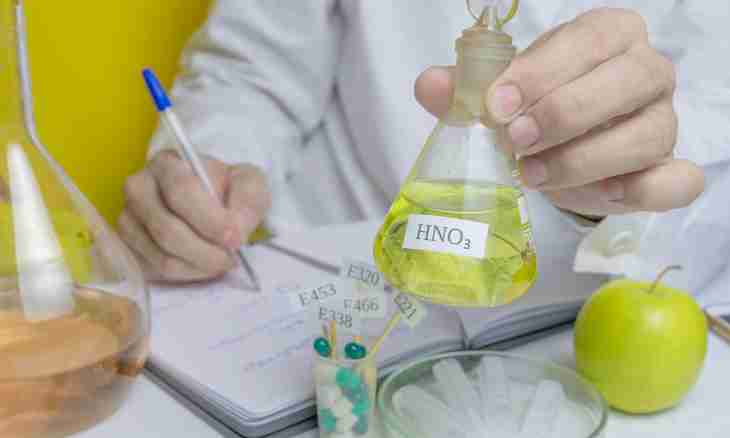Nitric acid – one of the strongest monobasic acids. Its chemical formula – HNO3. Represents itself the colourless liquid "smoking" on air (at the content of the acid from 95% and above). Can have a brownish shade of different degree of saturation, in view of presence of NO2 nitrogen oxide at it. How receive nitric acid?
Instruction
1. Unlike other monobasic acids, reactions of nitric acid with metals go on other mechanism. That is, hydrogen is not emitted, and various nitrogen oxides (NO2, NO, N2O), depending on concentration of acid are formed. In certain cases, pure nitrogen can be emitted, or even to be formed ammonium nitrate. It is its characteristic which it is always necessary to remember.
2. With gold, metals of platinum group and with tantalum nitric acid even concentrated does not react. However, mix of nitric and hydrochloric acids (1:3 on volume) dissolves both gold, and platinum. Therefore such mix since ancient times was called "royal vodka", that is was meant that it overcomes even "the tsar of metals" - gold. At reaction with gold, HAuCl4 connection is formed, at reaction with platinum – H2PtCl6.
3. During an era of the early Middle Ages, alchemists opened a method of synthesis of nitric acid by calcinating of mix of saltpeter and vitriol (copper, subsequently – iron). Certainly, it became outdated long ago, and now can be used only as fact-finding and demonstration, for example, at chemistry lessons.
4. In vitro it is possible to receive nitric acid, influencing potash or sodium saltpeter, that is potassium or sodium nitrate the concentrated sulfuric acid, at the increased temperature. Reaction goes according to such scheme: NaNO3 + H2SO4 = NaHSO4 + HNO3, nitric acid is allocated in the form of vapors which catch.
5. The main modern way of synthesis of nitric acid is based on oxidation of ammonia in the presence of platinum catalysts with different additives, for example, of rhodium. As as raw materials serves synthetic ammonia, these two productions for economy often combine, or they are in close proximity from each other. Reactions go according to such scheme: 4NH3 + 5O2 = 4 NO + 6H2O (oxide of nitrogen bivalent is formed). 2 NO + O2 = 2NO2 (Oxidation of a product before formation of nitrogen oxide tetravalent). NO2 + O2 + H2O = HNO3 (Formation of nitric acid).

